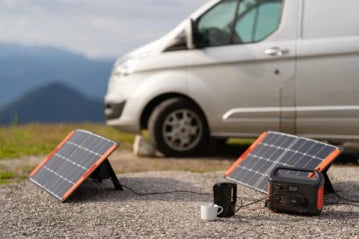
With the increasing demand for sustainable and renewable energy sources, solar panels have become a popular choice for powering various devices. If you're considering connecting a solar panel to a motor, you're taking a step towards harnessing clean and efficient solar energy. In this guide, we will walk you through the process of connecting a solar panel to a motor, ensuring a seamless and reliable power supply.
1. Solar Panels
Solar panels are the heart of any solar power system. They convert sunlight into electrical energy using photovoltaic cells. Understanding how solar panels work is crucial to effectively connect them to a motor.
a. How Do They Work?
Solar panels work by utilizing the photovoltaic effect, which involves the conversion of sunlight into electricity. When sunlight falls on the solar panel's surface, it excites the electrons within the photovoltaic cells, creating an electric current. This direct current (DC) is then converted into alternating current (AC) through an inverter for most household applications.
b. How Should They be Connected?
To connect solar panels to a motor, you need to consider the voltage and current requirements of the motor. Solar panels generate DC electricity, so you'll need to connect them to a DC motor or use a DC-to-AC inverter if your motor requires AC power.
Connect the positive terminal of the solar panel to the positive terminal of the motor and the negative terminal of the solar panel to the negative terminal of the motor. Ensure that the wiring is secure and protected from environmental factors to maintain a stable connection.
2. Types of Motors
Before connecting a solar panel to a motor, it's essential to understand the different types of motors available. The type of motor you have will determine how you connect it to the solar panel.
a. DC Motors: Direct Current (DC) motors are the most common type used in applications such as water pumps, fans, and small vehicles. They run on DC power and are ideal for direct connection to solar panels.
b. AC Motors: Alternating Current (AC) motors are commonly found in larger appliances and industrial equipment. To power an AC motor with a solar panel, you will need an inverter to convert the DC power generated by the solar panel into AC power.
Understanding the motor type will help you select the appropriate connection method and ensure compatibility with your solar panel setup.
3. Solar Charge Controller
A solar charge controller acts as an intermediary between the solar panels and the battery. Its primary function is to regulate the flow of electricity from the panels to the battery, ensuring optimal charging and preventing overcharging or damage.
To connect a solar panel to a motor, connect the solar panel to the charge controller's input terminals. The charge controller will regulate the voltage and current coming from the solar panels, ensuring that the battery receives the appropriate charging current.
4. DC Motor Controllers
If you're using a DC motor, a DC motor controller is a valuable component that allows you to control the motor's speed and direction. It acts as an interface between the solar panels and the motor, providing precise control over its operation.
To connect the DC motor controller, connect the output terminals of the charge controller to the input terminals of the motor controller. Then, connect the output terminals of the motor controller to the motor. Ensure that the wiring is correctly connected and secured to avoid any short circuits or loose connections.
5. Batteries
To ensure a continuous power supply when sunlight is unavailable or insufficient, it is recommended to incorporate a battery into your solar panel system. The battery stores excess energy generated by the solar panels during the day and provides power to the motor during low-light or nighttime conditions.
Connect the positive terminal of the battery to the positive terminal of the charge controller and the negative terminal of the battery to the negative terminal of the charge controller. This connection allows the charge controller to regulate the charging and discharging of the battery effectively.
Conclusion
By following these steps, you can successfully connect a solar panel to a motor, harnessing the power of the sun to drive your devices. The components mentioned, including solar panels, a solar charge controller, a battery, and appropriate motor controllers, work together to create a reliable and sustainable power system.
As you embark on your solar journey, remember to consider the specifications of your motor, choose the right components, and ensure proper wiring connections. By doing so, you'll be well on your way to utilizing solar energy and reducing your environmental impact while enjoying the benefits of clean and efficient power for your motorized applications.

0 Kommentare